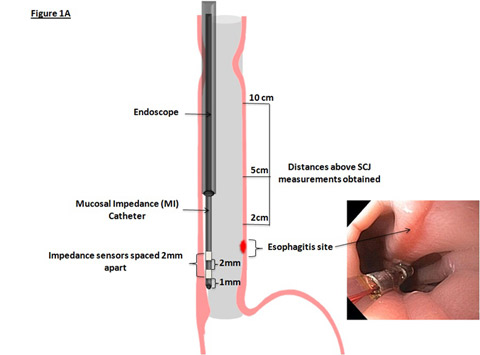Minimally invasive device diagnosed GERD via mucosal impedance
Researchers designed a single-channel esophageal mucosal impedance catheter that can diagnose chronic GERD more quickly than impedance or pH monitoring in a recent study.
In a prospective longitudinal study, investigators used the device to measure the mucosal impedance (MI) of 19 patients with erosive esophagitis; 23 with nonerosive, pH-positive GERD and 27 without GERD. Measurements were taken at the site of each patient’s esophagitis and 2 cm, 5 cm and 10 cm above the squamocolumnar junction.

Michael F. Vaezi
“Current diagnostic testing for GERD [is] hampered by not showing chronic consequence of reflux on esophageal lining,” Michael F. Vaezi, MD, PhD, professor of medicine, clinical director of the Gastroenterology, Hepatology and Nutrition and director of the Center for Swallowing and Esophageal Disorders at Vanderbilt University Medical Center in Nashville, Tenn., told Healio.com. “We explored other avenues by which we could gain insight into how reflux occurs, and have developed this innovative technology which we believe will change the face of how we test for reflux disease.”
The MI device consists of two circumferential sensing rings with a length and separation of 2 mm mounted on a soft, 2-mm diameter catheter that is advanced through an upper endoscope. Electrodes along its length are wired to an impedance voltage transducer and produce a maximum of 10 mcA; MI is expressed in ohms.

Figure 1A. Schematic representation of the device.
Among study participants, MI at the esophagitis site was significantly lower than that measured at nonerosive regions (median 811 ohms compared with 3,723 ohms, P=.001). MI also was significantly lower among patients with GERD at 2 cm above the junction compared with those without GERD (median 2,096 ohms vs. 3,607 ohms, P=.008). Results from patients with GERD indicated a graded MI increase axially from the distal to proximal esophagus that was not present among patients without GERD (P=.004). A threshold of 3,200 ohms was found to have an 88% sensitivity and 65% specificity for GERD diagnosis via ROC analysis.
Investigators did not observe any complications related to the MI catheter, which added a mean of 2 minutes to endoscopy time.
“We believe we have identified an innovative way to diagnose reflux instead of pH or impedance monitoring,” Vaezi said. “Our direct endoscopic measurement tool for mucosal impedance is able to detect microscopic changes due to GERD not usually detected visually during an upper endoscopy. The technique is simple and adds only a few minutes to the procedure.”
Disclosure: See the study for a full list of relevant disclosures.
